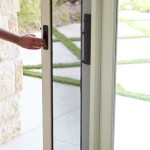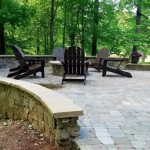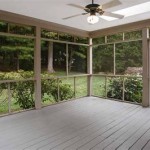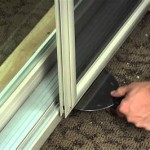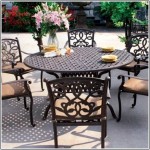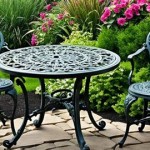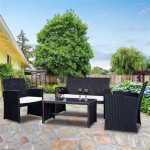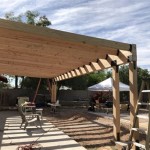Patio Sail Shade Ideas: Enhancing Outdoor Spaces with Style and Function
Patio sail shades have become increasingly popular for their ability to transform outdoor spaces into comfortable and aesthetically pleasing havens. They offer a stylish alternative to traditional patio covers, providing effective sun protection while adding a touch of modern elegance. The versatility of sail shades allows for creative design solutions that can be tailored to individual preferences and architectural styles. This article explores various patio sail shade ideas, focusing on design considerations, material options, installation techniques, and maintenance tips.
Understanding the Benefits of Patio Sail Shades
Before delving into specific design ideas, it is crucial to understand the benefits that patio sail shades offer. The primary benefit is, of course, sun protection. High-quality sail shades block a significant percentage of harmful UV rays, creating a safer and more comfortable outdoor environment. This is particularly important in regions with intense sunlight. Furthermore, sail shades provide shade, which reduces the overall temperature of the patio area, making it more enjoyable during hot weather. This passive cooling effect can also lead to lower energy consumption as indoor air conditioning becomes less necessary.
Beyond their functional benefits, sail shades add an aesthetic appeal to outdoor spaces. They come in a variety of colors, shapes, and sizes, allowing for creative design possibilities. The dynamic curves and angles of sail shades can create a visually striking focal point, enhancing the overall ambiance of the patio. They can be used to define specific areas within the patio, such as a dining space or a lounging area, further contributing to a sense of organization and purpose. Moreover, sail shades are relatively easy to install and maintain, making them a practical and convenient choice for homeowners.
Another advantage of sail shades is their flexibility. They can be easily adjusted or removed as needed, allowing for greater control over the amount of sunlight reaching the patio. This adaptability is particularly useful in areas with variable weather conditions. During the cooler months, sail shades can be taken down to allow for maximum sunlight penetration, while during the hotter months, they can be reinstalled to provide optimal shade protection. This versatility makes sail shades a viable solution for year-round outdoor comfort.
Exploring Design Options and Configurations
The design possibilities for patio sail shades are virtually limitless. The shape and configuration of the sails can be chosen to complement the architectural style of the house and the overall landscape design. One common design involves using a single triangular or rectangular sail to cover a specific area of the patio. This simple configuration is ideal for smaller patios or for providing shade over a specific seating area.
For larger patios, multiple sail shades can be combined to create a more complex and visually interesting design. Overlapping sails can provide enhanced shade coverage and protection from the elements. Different colors and shapes can be used to create a dynamic and artistic effect. The sails can be arranged in a variety of patterns, such as parallel lines, radiating spokes, or staggered layers. The choice of configuration depends on the size and shape of the patio, the desired level of shade, and the aesthetic preferences of the homeowner.
Another design consideration is the height and angle of the sails. The height of the sails affects the amount of shade provided and the overall appearance of the patio. Higher sails provide more shade but may also be more susceptible to wind damage. The angle of the sails can also be adjusted to maximize shade coverage at different times of the day. For example, angled sails can be used to block the afternoon sun, which is typically the hottest and most intense.
The placement of the anchoring points is another critical aspect of sail shade design. The anchoring points should be strategically located to provide optimal support and stability for the sails. They should also be aesthetically pleasing and blend seamlessly with the surrounding environment. Common anchoring points include existing structures, such as house walls, fences, and posts. If existing structures are not available, dedicated posts can be installed to support the sails. The posts should be made of durable materials, such as steel or wood, and should be securely anchored in the ground.
Furthermore, the orientation of the patio in relation to the sun's path needs to be considered. Understanding how the sun moves across the sky throughout the day is critical for determining the optimal placement and angle of the sail shades. This ensures maximum shade coverage during peak sunlight hours and minimizes the amount of direct sunlight reaching the patio.
Choosing the Right Materials for Durability and Performance
The choice of materials is a crucial factor in determining the durability and performance of patio sail shades. The most common material used for sail shades is high-density polyethylene (HDPE) fabric. HDPE fabric is a durable and weather-resistant material that offers excellent UV protection. It is also relatively lightweight and easy to clean.
Another popular option is knitted shade cloth. Knitted shade cloth is a breathable material that allows air to circulate, which helps to reduce the temperature of the patio area. It is also relatively inexpensive and easy to install. However, knitted shade cloth may not be as durable as HDPE fabric and may require more frequent replacement.
For maximum durability and longevity, some homeowners opt for PVC-coated polyester fabric. PVC-coated polyester fabric is a highly durable and weather-resistant material that offers excellent UV protection and water resistance. It is also resistant to mildew and fading. However, PVC-coated polyester fabric is more expensive than HDPE fabric or knitted shade cloth.
In addition to the fabric, the hardware used to support the sail shades is also important. The hardware should be made of durable and corrosion-resistant materials, such as stainless steel or galvanized steel. The hardware should also be strong enough to withstand the weight and tension of the sails. Common hardware components include turnbuckles, shackles, and eye bolts.
The color of the sail shades can also affect their performance. Darker colors tend to absorb more heat than lighter colors, which can make the patio area feel warmer. Lighter colors reflect more sunlight, which can help to keep the patio area cooler. The choice of color depends on the desired level of shade and the aesthetic preferences of the homeowner.
Finally, consider the fire retardancy of the chosen material. If the sail shade is near a grilling area or other potential fire hazards, it is essential to choose a material that is fire retardant. This will help to prevent the spread of fire and protect the safety of the occupants.
Installation Techniques and Maintenance Tips
Proper installation is crucial for ensuring the stability and longevity of patio sail shades. The installation process typically involves attaching the sails to anchoring points using tensioning devices, such as turnbuckles. The turnbuckles are used to adjust the tension of the sails, ensuring that they are taut and secure.
Before installing the sails, it is important to carefully plan the layout and placement of the anchoring points. The anchoring points should be strategically located to provide optimal support and stability for the sails. They should also be aesthetically pleasing and blend seamlessly with the surrounding environment.
During installation, it is important to use the correct tools and techniques. The hardware should be securely attached to the anchoring points using appropriate fasteners, such as bolts or screws. The sails should be carefully aligned and tensioned to ensure that they are properly supported and do not sag or droop.
Once the sail shades are installed, regular maintenance is essential for keeping them in good condition. The sails should be cleaned regularly to remove dirt, debris, and mildew. This can be done using a mild soap and water solution and a soft-bristled brush. The sails should also be inspected regularly for signs of wear and tear.
If any damage is detected, it should be repaired promptly to prevent further deterioration. Small tears and holes can often be repaired using a patch kit. However, larger tears and holes may require professional repair or replacement. The hardware should also be inspected regularly for signs of corrosion or damage. Any damaged hardware should be replaced immediately to ensure the continued stability of the sails.
During periods of inclement weather, such as high winds or heavy rain, it is advisable to remove the sail shades to prevent damage. This is particularly important in areas that are prone to severe weather events. When removing the sails, they should be stored in a dry and secure location to protect them from the elements.
By following these installation techniques and maintenance tips, homeowners can ensure that their patio sail shades provide many years of reliable shade and protection.

Boen 16 Ft X Beige Square Shade Sail Canopy Awning Uv Block For Outdoor Patio Garden And Backyard Sh 40002 The Home Depot

Patio Cover Ideas The Home Depot

Create A Wonderful Garden Retreat Using One Of These Shade Ideas Shadeform Blog

Shade Sails An Easy Diy Guide To Installing Your Own Reviewed

Backyard Shade Sails Landscaping Network

Shade Sails Coolaroo
A Quick D I Y Sun Shade For The Backyard Lissa Anglin Part Of Me Blog

Sun Shade Sails For Patios Outdoor Areas Van Nuys Awning

Backyard Shade Projects And Ideas Patio Canopy

How To Install A Traingle Sun Shade Sail
Related Posts

